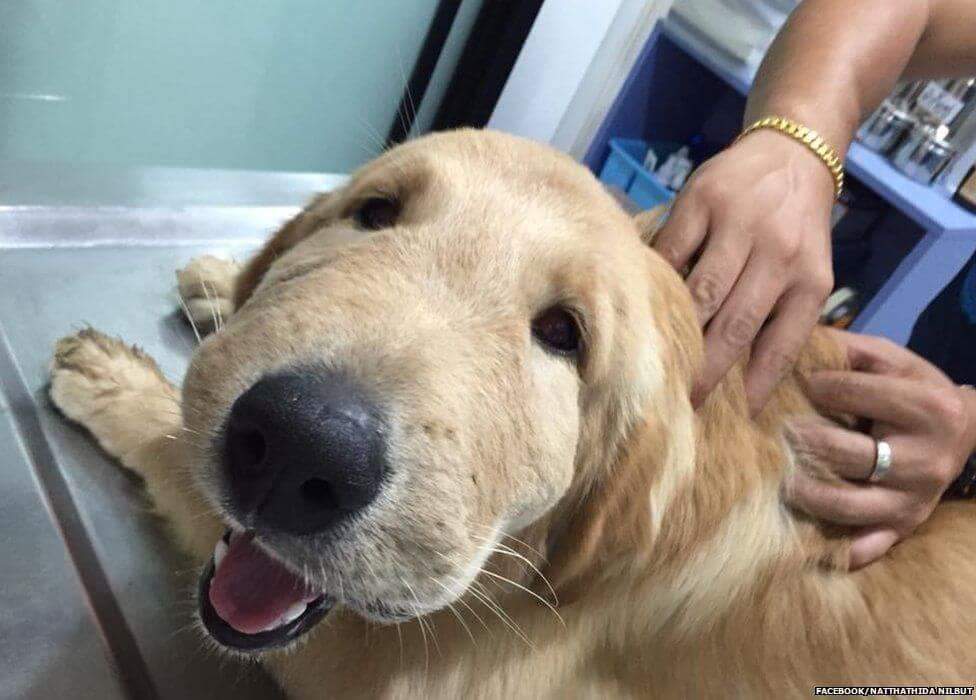While wasps are not necessarily dangerous to dogs, they can cause a lot of discomfort and pain if the dog ingests one. The sting from the wasp can cause swelling and irritation in the mouth and throat, as well as an allergic reaction. If your dog has eaten a wasp, there are a few things you need to do.
The first thing is to make sure that your dog is not having an allergic reaction to the sting. If your dog appears to be experiencing other symptoms such as vomiting or having trouble breathing, then you should take him to see your vet immediately.
If this doesn’t seem to be an issue, then it’s time to remove the stinger from their body and get rid of any swelling that has resulted from it being lodged in their mouth or throat area by using a pair of tweezers (make sure they’re clean). After that’s done, it’s time for some extra attention. Give your pup lots of extra love and affection because they’ve been through quite an ordeal.
What Happens if Your Dog Eats a Wasp?
If your dog has eaten a wasp, don’t panic.
The wasp’s stinger is attached to its abdomen, and it can’t fly away after it stings. The barbs on the stinger keep it in place as the wasp dies. Wasp venom is very painful, but it’s not fatal to humans or dogs.
If your dog eats a wasp, you might see some signs of pain and swell in his mouth or throat. If he doesn’t show any unusual symptoms within 24 hours of eating a wasp, everything should be fine.
If your dog does show symptoms within 24 hours after eating a wasp, call your veterinarian immediately for advice on how to treat him at home before taking him in for an exam and possibly administering medication prescribed by your vet.
Will My Dog Be Ok After a Wasp Sting?
While it’s true that wasps are more inclined to sting dogs than humans, the venom in their stings is still potent enough to cause significant pain and discomfort.
Dogs also have a higher body temperature than humans, which means that the venom can take effect more quickly and intensely. If you believe your dog has been stung by a wasp, there are some things you can do to try to minimize the symptoms.
While there is no antidote for the venom itself, you can help your dog by keeping them calm and comfortable while they recover. You should also watch out for signs of an allergic reaction, such as swelling or difficulty breathing.
How Long Does It Take for a Dog to React to a Wasp Sting?
When a dog is stung by a wasp, you may notice some symptoms almost immediately. The dog may start to limp or have trouble walking, they may have hives on their skin and they may start drooling. If you see these signs, it’s important to know that the reaction could be an allergic one.
If you wait until these symptoms appear before treating your pet, you could end up with more serious problems. Wasp venom can cause swelling and even affect your dog’s organs if not treated quickly. If you see any of these symptoms in your dog after being stung by a wasp, call your vet immediately.
What Do You Do if Your Dog Eats a Bee or Wasp?
If you suspect your dog has eaten a bee or wasp, it’s important to get them to the vet immediately.
If you notice that your dog seems to be experiencing some of the symptoms associated with anaphylactic shock (hives, swelling, trouble breathing, etc.), call Animal Poison Control immediately or bring your dog to an emergency vet clinic.
If you don’t think your dog is experiencing any of these symptoms, but they have eaten a bee or wasp and are exhibiting signs like vomiting and diarrhea, call Animal Poison Control anyway so they can give you advice about whether or not there are any other symptoms to look for.
If your dog has eaten either a bee or a wasp and isn’t showing any signs of distress—no vomiting or diarrhea, but does have trouble breathing or difficulty swallowing, call Animal Poison Control anyway so they can give you advice about whether or not there are any other symptoms to look for.
In Conclusion
If your dog ate a wasp, it is important to know that the stinger can remain in the dog’s mouth and cause discomfort. The wasp sting itself will not hurt your dog, but it can become a problem if the stinger remains attached to the dog’s tongue or cheek.
A safe course of action is to take your dog to a veterinarian’s office as soon as possible, who will likely remove the stinger with tweezers. If you are unable to get your dog there right away, you can try using an ice cube to numb the area where the stinger remains attached.
